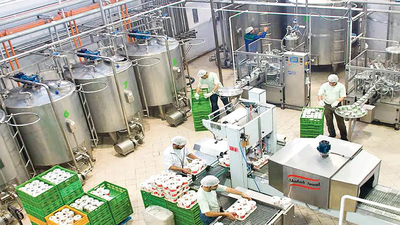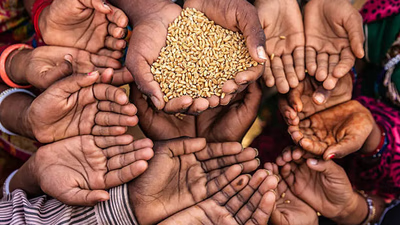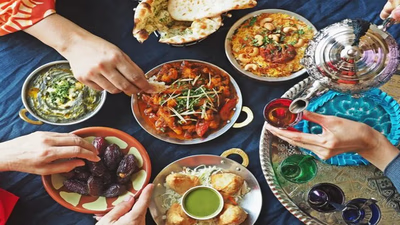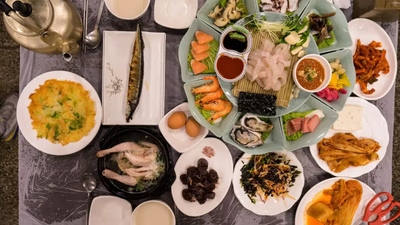
Exploring trade insights in Middle East food markets.
West Asia is characterized by arid and semi-arid regions, leading to limited water resources for agricultural purposes. Water scarcity poses a significant challenge for food production, as it restricts irrigation and affects crop yields. The region heavily relies on imports to meet its food demands. The availability of arable land is relatively limited in West Asia. Urbanization, desertification, and soil degradation further reduce the amount of land suitable for agriculture. The scarcity of arable land hampers local food production and necessitates increased dependence on food imports.
West Asia is particularly vulnerable to the impacts of climate change, including rising temperatures, erratic rainfall patterns, and increased frequency of extreme weather events such as droughts and floods. These changes affect agricultural productivity, leading to crop failures, livestock losses, and reduced yields. The region has experienced ongoing political instability and conflict, which disrupts agricultural activities and food supply chains. Wars and conflicts can damage infrastructure, displace populations, and hinder trade, leading to food shortages and price volatility.
The scars of war are still open in several Middle Eastern and North African countries, and since 2011, when the food price crisis of 2008-2009 and 2010-2011, which exacerbated already existing economic and political grievances, led to unrest in Tunisia, Egypt And beyond that, there is. High food prices will affect the entire region, yet countries with abundant financial resources must be able to manage and overcome these stresses, while countries with limited resources - as well as governments that have failed in whole or in part – will leave their citizens increasingly food insecure. Morocco, as one of the world's leading producers and exporters of fertilizers, may see benefits from this increasingly valuable resource.
Food security conditions in the Middle East and North Africa region may worsen dangerously as Russia's war increases stress and shortages on global food supply chains on which the region is heavily dependent. Economic activists in the private sector, by evaluating the crisis in Ukraine and its consequences on food security, considered it necessary to closely monitor the global markets and emphasized that due to the import of a part of Iran's required grains from Russia and Ukraine, the country's leaders should seriously regulate the grain and oil market. monitor the food supply and take measures so that the needs of farmers, poultry farmers and other producers will not be disrupted during the spring of next year, in addition to supplying the necessities of the people's tables.
The food industry is one of the largest industries in the world. It makes sense because we all need food every day. But this industry has also become one of our biggest problems. Manufacturers have started to put a lot of pressure on their quantity, while ignoring the quality of their manufactured products. Fortunately, there are companies that care about the health of their consumers. Poya Vision is one of the companies importing raw materials for the food industry. The priority of this company is the health of its customers and offers them quality products. Today, the food industry has become very diverse and its production ranges from small, traditional and family activities that are very busy, to large, capital-intensive and mechanized industrial processes.
The majority of West Asian countries heavily rely on food imports to meet their domestic needs. Reliance on external sources for food makes these countries vulnerable to global price fluctuations, trade disruptions, and export restrictions imposed by exporting countries. Ensuring food security becomes a major challenge in the face of these uncertainties. West Asia has witnessed a significant population increase over the past decades, exacerbating the challenges related to food security. The growing population puts additional pressure on the food market, necessitating increased agricultural production and efficient distribution systems.
As West Asian countries experience economic development and urbanization, dietary preferences are shifting towards more resource-intensive diets, including increased consumption of meat and processed foods. This shift creates additional demands on the food market, requiring a more diverse and sustainable food production system. Inadequate infrastructure, storage facilities, and post-harvest management contribute to significant food waste and loss in the region. This wastage further strains the food market and exacerbates food security concerns.
-

West Asian countries are advancing their food production through modern agricultural practices, including advanced irrigation, hydroponics, and greenhouse cultivation. These methods optimize water use and increase crop yields, particularly in arid regions. The region is also seeing a rise in organic farming, driven by consumer demand for healthier options and sustainable practices. To enhance food safety, traceability systems are being implemented, allowing for the tracking of food products from farm to consumer. The growth of food technology startups is transforming the industry, utilizing AI, blockchain, and data analytics for improved production and distribution. The food packaging industry is evolving, focusing on modern devices to reduce human intervention and enhance efficiency. With a diverse food industry that includes sectors from dairy to snacks, the emphasis on quality packaging and storage methods is crucial for maintaining product integrity. Governments are enforcing stricter food safety regulations, while investments in food processing technologies are increasing.
This includes the development of ready-to-eat meals and convenience foods to meet changing consumer lifestyles. Sustainable packaging solutions are gaining traction, with techniques like modified atmosphere packaging being adopted to prolong shelf life. Additionally, robust cold chain infrastructures are being established to ensure the quality of perishable goods, reflecting a commitment to food safety and quality in the region.
-

Water scarcity is a pressing issue in the Middle East, impacting agricultural productivity and food security. Countries in the region are increasingly reliant on food imports to satisfy domestic needs, leading to vulnerabilities in the face of global price fluctuations and supply chain disruptions, as highlighted during the COVID-19 pandemic. Innovative solutions such as water desalination and drip irrigation are being implemented to mitigate water scarcity. The food industry plays a crucial role in employment and economic value creation in West Asia, with potential for growth due to favorable agricultural conditions and access to quality raw materials. However, ongoing conflicts, such as the war in Syria and the Ukraine crisis, exacerbate food insecurity by disrupting grain supplies and increasing prices. Malnutrition and dietary challenges persist, driven by lifestyle changes and economic factors. Climate change poses additional risks, affecting agricultural productivity and livestock rearing. Addressing food waste is also critical, as significant losses occur throughout the supply chain. Overall, enhancing local agricultural production, diversifying food sources, and implementing sustainable practices are vital for improving food security in the Middle East.
-

Halal food, essential in Middle Eastern cuisine, adheres to Islamic dietary laws, prohibiting pork and alcohol while emphasizing specific preparation methods. Staples like rice, wheat, and legumes form the foundation of many dishes, complemented by flatbreads such as pita and naan. Hospitality is paramount, often showcased through communal meals featuring roasted meats. The cuisine is characterized by grilling, roasting, and slow cooking, with popular dishes including shawarma and kebabs. Middle Eastern food is renowned for its freshness, health benefits, and aromatic qualities, leading to a global interest in its recipes. Mezze, a style of dining with small shared plates, highlights various dips and appetizers. Spices like cumin and cardamom, alongside herbs such as parsley and mint, enhance the flavors of lamb, chicken, and beef dishes. Desserts like baklava and kunefe showcase the region"s rich culinary traditions.
Coffee and tea play significant roles in social interactions, with traditional preparation methods reflecting the region"s hospitality culture. The global appeal of Middle Eastern cuisine continues to grow, driven by its unique flavors and health-conscious ingredients.
-

Asian cuisine is characterized by its diversity and bold flavors, with rice and noodles as staples across many countries. Fresh, seasonal ingredients play a vital role, enhancing both taste and nutritional value. Cooking techniques like stir-frying preserve the texture and nutrients of food. The Asian food market is rapidly expanding, projected to double to over $8 trillion by 2030, driven by a growing middle class and increasing consumer spending. The return of restaurant dining post-pandemic has further fueled this growth. Countries like Japan and Thailand are seeing a rise in food enthusiasts, impacting the global food industry. Street food culture is integral, showcasing local flavors and offering diverse options. Each region has unique culinary traditions, with common elements such as the use of various condiments and spices.
As consumer health awareness rises, there is a shift towards plant-based alternatives, particularly in markets like Singapore, Japan, and China. The food industry in Asia, especially in basic products and seasonings, significantly contributes to the region"s economic prosperity."
-

West Asia faces significant challenges in food production due to arid climates, limited water resources, and urbanization, which restrict agricultural activities. The region"s reliance on food imports makes it vulnerable to global price fluctuations and trade disruptions. Climate change exacerbates these issues, leading to crop failures and livestock losses. Political instability further complicates the situation, disrupting supply chains and causing food shortages. The ongoing conflict in several Middle Eastern countries has led to high food prices and increased food insecurity. The region"s growing population and shifting dietary preferences towards resource-intensive foods heighten the demand for a diverse and sustainable food production system. Inadequate infrastructure and post-harvest management contribute to significant food waste, compounding the challenges of ensuring food security. As countries like Morocco leverage their fertilizer production capabilities, there is a pressing need for effective monitoring of food supply chains and strategic regulation to support local producers and meet consumer needs.
The food industry, while essential, faces pressures that often compromise product quality. Companies like Poya Vision prioritize health and quality in food imports, highlighting the importance of sustainable practices in addressing the region"s food security challenges."
-

Asian food manufacturers produce a wide range of products, including snacks, beverages, and processed foods, reflecting the diverse cuisines of the region. They blend traditional recipes with modern technology to ensure authenticity while meeting contemporary demands for convenience and quality. These manufacturers adhere to strict quality and safety standards, following local regulations and global certifications like ISO and HACCP. With advanced production facilities and a strong export-oriented approach, they cater to both domestic and international markets. Many engage in private label and contract manufacturing, allowing them to customize products for retailers and food service providers. Sustainability and traceability are increasingly prioritized, with manufacturers adopting eco-friendly practices and implementing systems to ensure product authenticity. Research and development play a crucial role in introducing innovative products that align with evolving consumer preferences. Notable companies like Mitsubishi and Tsing Tao lead the industry, showcasing the prominence of Asian food brands globally. Overall, the Asian food manufacturing sector is a dynamic and growing hub, contributing significantly to the global food supply.






